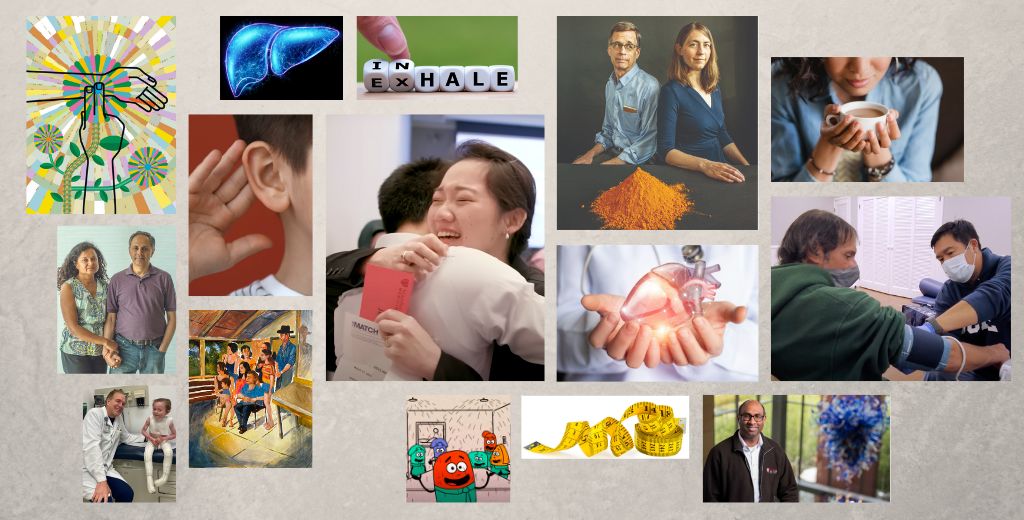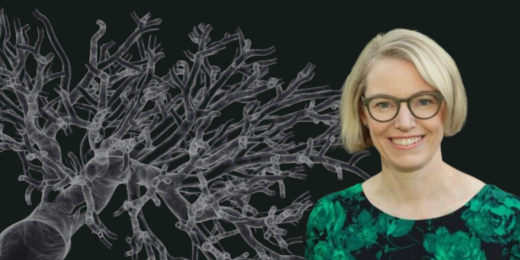Our coverage of research and patient care news at Stanford Medicine in 2023 ranged from scientists discovering how to turn cancer cells into cancer-fighting weapons to how "cyclic sighing" can improve mood and reduce anxiety.
Here, we share the stories and videos published in 2023 on our News Center, Scope and Stanford Medicine magazine sites that resonated most with our readers online and on social media.
Most-read articles
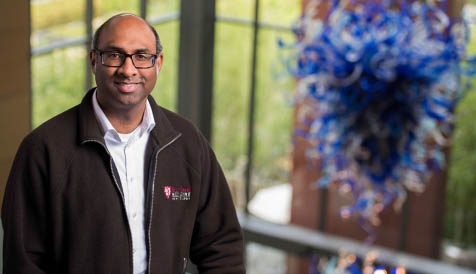
News Center
Scientists transform cancer cells into weapons against cancer: Using an approach that's similar to turning one gangster against another to fight crime, researchers have figured out how to turn cancer cells into "informant" cells that train the immune system to fight cancer.
Nasal injections could treat long-term COVID-19-related smell loss: Injecting platelet-rich plasma into the part of the olfactory sensory system that sends smell sensations to the brain is a promising treatment for people who have lost their sense of smell.
Scope
'Cyclic sighing' can help breathe away anxiety: A few minutes a day of practicing this controlled breathing exercise can quickly lower your stress and improve your mood. Plus, the practice can keep you feeling better all day long.
Is an increase in penile length cause for concern? In studying how environment factors -- think exposure to pesticides and hygiene products -- might affect men's reproductive health, researchers have added an average increase in erect penis lengths to concerns about trending declines in sperm quality and testosterone levels.
Stanford Medicine magazine
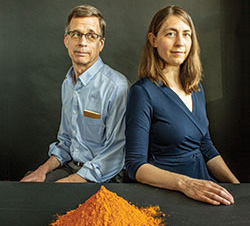
Issue 2 2023, Health on a planet in crisis, The spice sellers secret: Researchers' detective work into why pregnant women in Bangladesh have dangerously high amounts of lead in their bodies reveals an unexpected source: turmeric sprayed with an agent that makes it more yellow.
Issue 3 2023, AI explodes, Medicine's AI boom: Amid the frenzy over the potential of artificial intelligence to revolutionize medicine, Stanford Medicine is building on its legacy of experience in the AI space and the expertise of researchers, faculty and clinicians already putting the new tools to work.
Issue 1 2023, Real world health, Longevity's secret sauce: A look into the social and biological factors behind the extraordinary longevity and health of people in Nicoya, Costa Rica, and a few other places around the globe known as blue zones.
Most-watched videos
If you struggle with impostor syndrome, you're not alone: Impostor syndrome is common, especially in high achievers, women and under-represented minorities. This animated video illustrates how those feelings of inadequacy play out and how you can find support to overcome them.

Stanford Medicine Match Day 2023: In the moments after anxious final-year medical students simultaneously rip open letters telling them where they've been matched for residencies and internships, a flood of emotions -- joy, gratitude and pride -- overcome them.
How do homeless people see a doctor? "It's sobering and humbling to think all these environmental forces could have pushed anyone, really, onto this different pathway," said a Stanford internist who sees patients at a community clinic that serves homeless people.
Most social media impressions
Intermittent fasting spurs proliferation of liver cells in lab mice: This Stanford Medicine-led study was the first to show the immediate effect of diet on liver cell biology by abstaining from eating for lengthy periods of time. The finding challenges long-held beliefs that cells in the adult liver divide rarely, and do so primarily to repair damage to the organ.
Stanford Medicine surgeons perform first beating-heart transplants from cardiac death donors: Surgeons believe the new technique, which has since been performed on more patients, will improve patient health outcomes by reducing organ damage, thereby boosting the pool of available organs.
Brain wiring explains why autism hinders grasp of vocal emotion: Children with autism often struggle to identify emotional cues in other people's voices because of differences in the wiring and function of a key social center in their brains, a finding that could provide clues to therapies.
Editors' picks
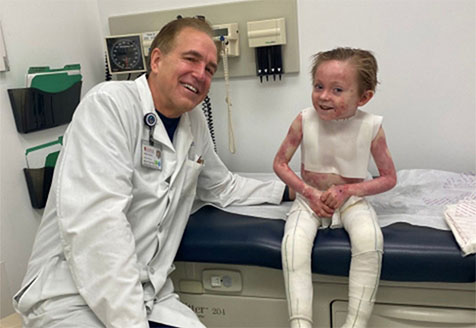
Gene therapy gel heals decades-old wounds in trial for blistering skin disease: Though we published the news in mid-December 2022 about the first topical gel shown to heal extremely painful, life-threatening blisters for patients with dystrophic epidermolysis bullosa, it has since been seen by more people than any of the articles published in 2023.
And yet, there's hope: In the recent Stanford Medicine magazine issue, Aruna Gambhir recounted her family's longtime biological battle against cancer, which took the lives of her father, brother, son, and husband, renowned cancer physician and researcher Sam Gambhir.
At the time of our interview, Aruna Gambhir was waging her own fight against a third bout of the disease, even while expressing hope that cells being studied from her son's tumor will eventually help vanquish the disease. Gambhir died shortly after her story published online in November.
Credits for top image: Top row, from left: Misha Gravenor; Marko Aliaksandr/Shutterstock.com; Fokussiert; Timothy Archibald; frantic00/Shutterstock.com. Middle row: Timothy Archibald; Pixel-Shot/Shutterstock.com; Stanford Medicine; Natali _ Mis/Shutterstock.com; and Mark Hanlon. Bottom row: Millner family; Michael Paraskevas; Maya Adam; stockphoto-graf; Steve Fisch.


